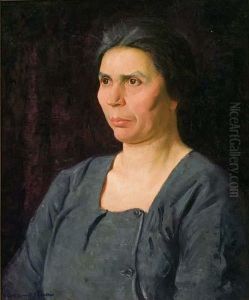Gerrit A. Beneker Paintings
Gerrit Albertus Beneker was an American painter and illustrator born on July 26, 1882, in Grand Rapids, Michigan. He is best known for his works that depicted industrial and wartime themes, capturing the spirit of American labor and patriotism during the early 20th century. Beneker's artistic journey began at a young age, leading him to study at the School of the Art Institute of Chicago. His education further advanced when he attended the Art Students League of New York, where he was influenced by the realist traditions that would come to define his career.
Beneker's work was deeply influenced by the socio-economic conditions of his time, particularly the surge of industrialization and the American experience during World War I. In 1918, he was appointed as an official artist for the United States Shipping Board Emergency Fleet Corporation during the war, a role that allowed him to document the efforts of American workers in shipyards and factories. This experience cemented his interest in portraying the dignity and strength of the American worker, themes that are prevalent throughout his oeuvre.
After the war, Beneker continued to explore the relationship between man and industry, often focusing on the individual's role within the larger mechanized society. His paintings are characterized by their vibrant realism, attention to detail, and ability to convey the emotional and physical intensity of labor. Notable works from this period include "Testing the Big Cable" (1923) and "The Spirit of Industry" (1920s), which exemplify his skill in capturing the essence of human endeavor in the face of technological advancement.
Beneker was also an accomplished illustrator, contributing to popular magazines of the time such as "The Saturday Evening Post". His illustrations further propagated his ideals of hard work, patriotism, and the American dream. Beyond his thematic focus, Beneker was recognized for his technical prowess, particularly his use of light and shadow to emphasize the physicality and emotion of his subjects.
Gerrit A. Beneker's legacy is that of a quintessential American artist who celebrated the industrial age and its workers, providing a valuable visual record of an era marked by significant transformation. His work remains a testament to the power of art to reflect and shape societal values. Beneker passed away on October 23, 1934, in Truro, Massachusetts, leaving behind a body of work that continues to be appreciated for its historical and artistic significance.



